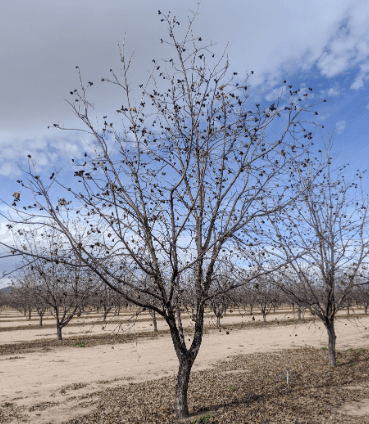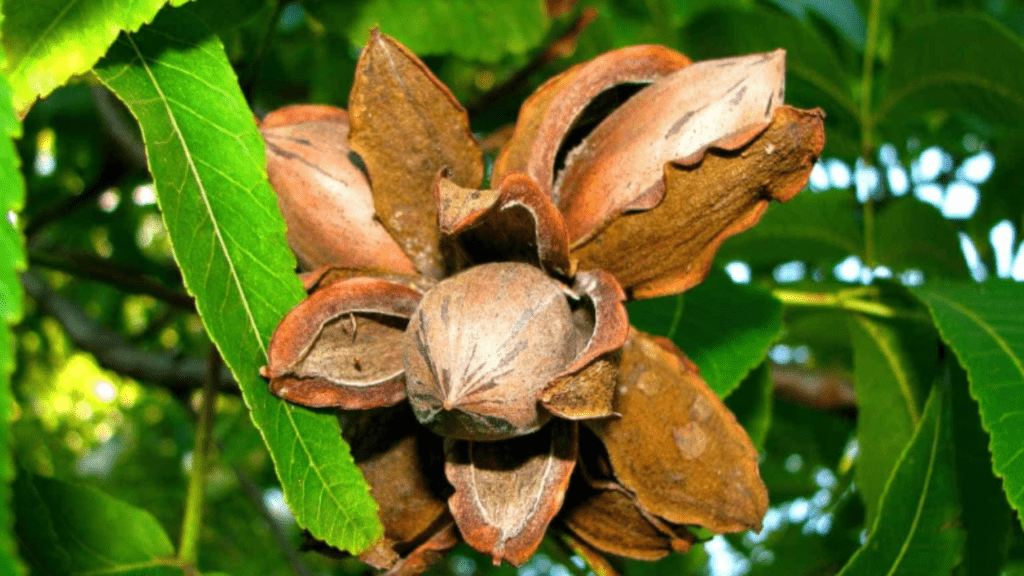
How to Care for Your Pecan Tree in Winter: Essential Tips for a Healthy Harvest
Caring for your pecan tree in winter is crucial to ensure a healthy harvest in the spring. One essential tip for winter care is to prune your tree. Pruning helps to remove dead or diseased branches, promoting new growth and improving the overall health of the tree. It’s best to prune your pecan tree in late winter when it is dormant, but be careful not to over-prune, as this can weaken the tree. Another important step in caring for your pecan tree in winter is to protect it from cold weather. Covering the tree with a fabric or using a tree wrap can help insulate it and prevent damage from freezing temperatures. Additionally, you can add a layer of mulch around the base of the tree to help retain moisture and regulate soil temperature. By following these essential tips for winter care, you can ensure that your pecan tree stays healthy and produces a bountiful harvest when spring arrives.
Table of Contents
ToggleUnderstanding Pecan Trees
Pecan trees are a valuable addition to any landscape, providing shade and delicious nuts. When it comes to caring for pecan trees in the winter, there are a few key steps to keep in mind. One essential tip for winter care is to prune your tree. Pruning helps to remove dead or diseased branches, promoting new growth and improving the overall health of the tree. It’s best to prune your pecan tree in late winter when it is dormant, but be careful not to over-prune, as this can weaken the tree. Another important step in caring for your pecan tree in winter is to protect it from cold weather. Covering the tree with a fabric or using a tree wrap can help insulate it and prevent damage from freezing temperatures. Additionally, you can add a layer of mulch around the base of the tree to help retain moisture and regulate soil temperature. By following these essential tips for winter care, you can ensure that your pecan tree stays healthy and produces a bountiful harvest when spring arrives.
Overview of pecan tree characteristics and growth habits.
Pecan trees are known for their large, oval-shaped nuts and are commonly found in the southern United States. These trees can reach heights of 70-100 feet and have a spread of 40-75 feet, making them a striking addition to any landscape. Pecan trees have a long lifespan and can live for over 300 years if properly cared for. They have a deep taproot system, which allows them to access water and nutrients from deep within the soil. Pecan trees are also known for their beautiful foliage, with leaves that can range from bright green to a golden yellow in the autumn. In terms of growth habits, pecan trees require well-drained soil and plenty of sunlight to thrive. They are also wind-pollinated, so planting multiple trees in close proximity can help increase nut production. Pecan trees typically bear fruit in the fall, with the nuts maturing and ready for harvest in late September to early November. Overall, pecan trees are a beautiful and rewarding addition to any landscape, and with proper care and attention, they can provide delicious nuts for generations to come.
Importance of seasonal care for pecan trees.
Pecan trees are a valuable addition to any landscape, but they do require seasonal care to thrive. In the spring, it is important to prune the trees to promote healthy growth and remove any dead or diseased branches. This will also help improve air circulation and sunlight penetration, which is essential for nut production. In the summer, it is important to water the trees regularly, especially during dry periods, to ensure they have enough moisture for healthy growth. It is also important to fertilize the trees in the early summer to provide them with the nutrients they need to produce a bountiful harvest. In the fall, it is important to monitor the trees for any signs of disease or pest infestations and take appropriate measures to address these issues. Additionally, it is important to harvest the nuts at the right time to ensure they are of the highest quality. Overall, seasonal care for pecan trees is essential to ensure they remain healthy, productive, and beautiful for years to come.
Winter Dormancy in Pecan Trees
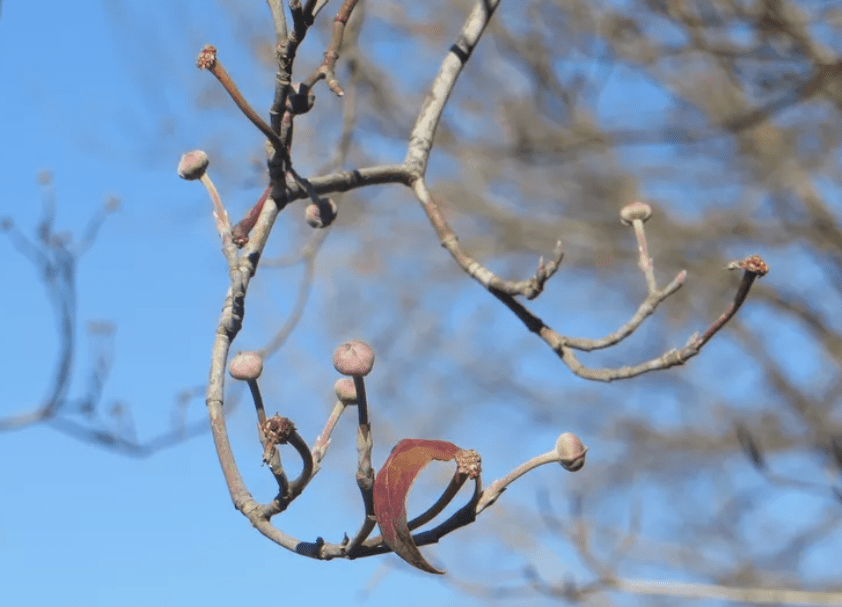
Explanation of the dormancy period in pecan trees.
Pecan trees go through a period of dormancy in the winter, which is a natural process that allows the tree to conserve energy and prepare for the coming spring. During this time, the tree’s growth slows down, and it sheds its leaves. This dormant period is essential for the tree’s survival during the colder months. It allows the tree to conserve its energy and resources, so it can resume growth and produce nuts when the weather warms up. This dormancy period is a crucial part of the pecan tree’s life cycle and is an important consideration for anyone looking to grow and care for these trees. Understanding and respecting the dormancy period is essential for ensuring the overall health and productivity of pecan trees.
How winter dormancy affects pecan tree growth and development.
Winter dormancy in pecan trees is a natural process that allows the tree to conserve energy and prepare for the coming spring. During this time, the tree’s growth slows down, and it sheds its leaves. This dormant period is essential for the tree’s survival during the colder months. It allows the tree to conserve its energy and resources, so it can resume growth and produce nuts when the weather warms up. The dormancy period also plays a crucial role in the overall health and productivity of pecan trees. It helps to ensure that the tree remains healthy and resilient, ready to produce high-quality nuts when the growing season begins. Proper care and attention during the dormancy period are important for the long-term growth and development of pecan trees. It is essential to understand and respect the dormancy period in order to ensure the overall health and productivity of these trees.
Preparing Your Pecan Tree for Winter
Steps to take before winter arrives:
Pruning: Importance and techniques for winter pruning.
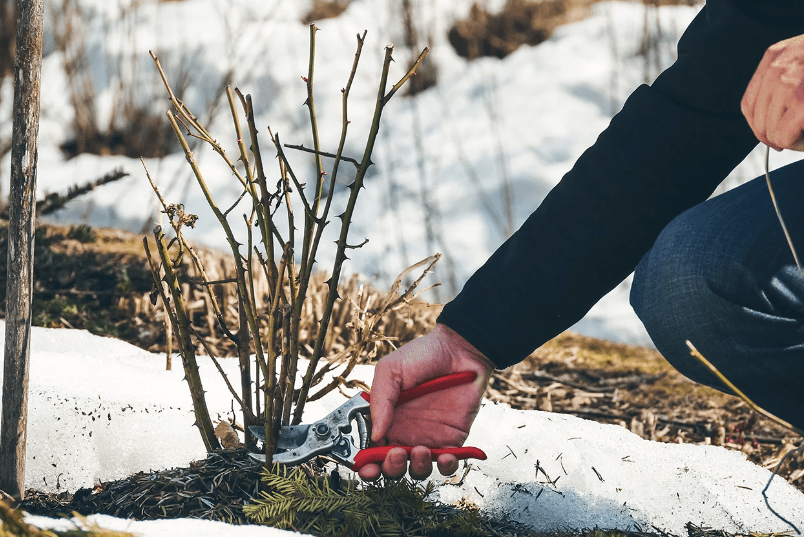
Winter pruning is an important step in preparing your pecan tree for the dormant season. Pruning helps to remove dead or diseased branches, improve air circulation, and shape the tree for better growth in the coming spring. It is recommended to prune your pecan tree in late winter or early spring before new growth begins. When pruning, make sure to use sharp, clean pruning tools to make clean cuts and avoid damaging the tree. Focus on removing any branches that are crossing or rubbing against each other, as well as any damaged or weak branches. It is also important to maintain the central leader of the tree and remove any excessive growth that can cause crowding. By properly pruning your pecan tree in the winter, you can promote healthier, stronger growth and increase the overall productivity of your tree in the coming growing season.
Soil Preparation: Amending soil and mulching around the tree base.
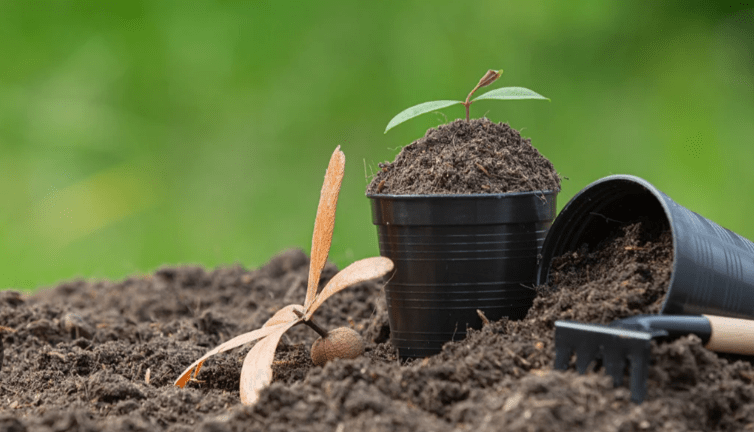
Preparing your pecan tree for winter is essential to ensure its overall health and productivity. One important step is winter pruning, which helps remove dead or diseased branches, improve air circulation, and shape the tree for better growth in the coming spring. It is best to prune your pecan tree in late winter or early spring before new growth begins. Make sure to use sharp, clean pruning tools to make clean cuts and avoid damaging the tree. Focus on removing any branches that are crossing or rubbing against each other, as well as any damaged or weak branches. It is also important to maintain the central leader of the tree and remove any excessive growth that can cause crowding. By properly pruning your pecan tree in the winter, you can promote healthier, stronger growth and increase the overall productivity of your tree in the coming growing season.
Another important aspect of preparing your pecan tree for winter is soil preparation. Amending the soil and mulching around the tree base can help provide the necessary nutrients and protection for the tree during the dormant season. Adding organic matter to the soil can improve its structure and fertility, while mulching around the tree base can help retain moisture, regulate soil temperature, and prevent weed growth. By taking these steps to prepare your pecan tree for winter, you can ensure its overall health and productivity in the coming growing season.
Fertilization: Appropriate winter fertilization methods.
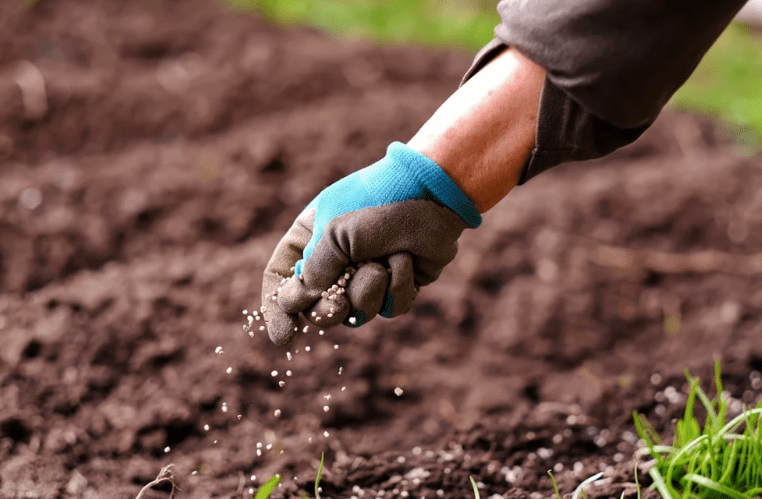
During the winter months, it’s important to use appropriate fertilization methods for your plants and trees. One important aspect of winter fertilization is to use slow-release fertilizers that can provide nutrients to the soil over a longer period of time. This will help to maintain the health and vigor of the plants during the dormant season. It’s also important to test the soil to determine what specific nutrients are needed for your plants and trees. By using the right fertilization methods, you can ensure that your plants and trees have the necessary nutrients to thrive during the winter months and be well-prepared for the growing season ahead. Additionally, it’s important to follow the recommended guidelines for fertilization to avoid over-fertilizing, which can be harmful to the plants. By taking these steps, you can help promote the health and vitality of your plants and trees during the winter months.
Protecting Pecan Trees from Winter Damage
Identifying potential winter threats (e.g., frost, wind, pests).
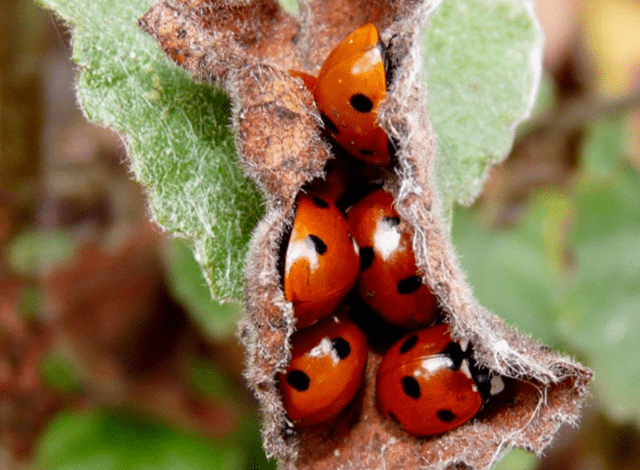
As we prepare our pecan trees for winter, it’s important to be aware of potential winter threats that could impact their overall health and productivity in the coming growing season. One of the key steps in preparing for winter is to ensure appropriate fertilization methods. This includes using slow-release fertilizers to provide nutrients to the soil over a longer period of time, as well as testing the soil to determine specific nutrient needs. By following these guidelines, we can help promote the health and vitality of our pecan trees during the winter months.
In addition to fertilization, it’s important to identify potential winter threats such as frost, wind, and pests. Frost can damage the foliage and buds of pecan trees, while strong winds can cause physical damage. Pests such as scale insects and aphids can also pose a threat to the health of pecan trees during the winter months. By identifying these potential threats, we can take proactive measures to protect our pecan trees and ensure their overall well-being during the winter season.
By taking these steps to prepare our pecan trees for winter, we can help ensure their overall health and productivity in the coming growing season. It’s important to be mindful of potential threats and to use appropriate fertilization methods to promote the health and vitality of our pecan trees during the winter months.
Methods to protect pecan trees from winter damage:
Frost Protection: Using covers, wraps, and proper mulching.
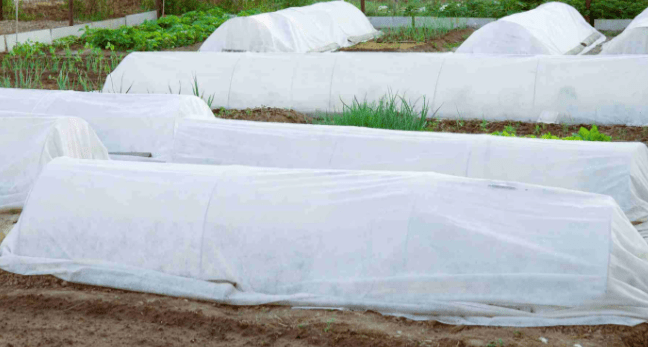
Pecan trees are susceptible to winter damage from frost, wind, and pests. To protect them from frost, it’s important to use covers, wraps, and proper mulching. These methods can help insulate the trees and protect them from extreme cold temperatures. Covers and wraps can be used to protect the foliage and buds from frost damage, while proper mulching can help regulate soil temperature and protect the roots. By using these methods, we can help ensure the health and vitality of our pecan trees during the winter months.
Wind Protection: Installing windbreaks or barriers.
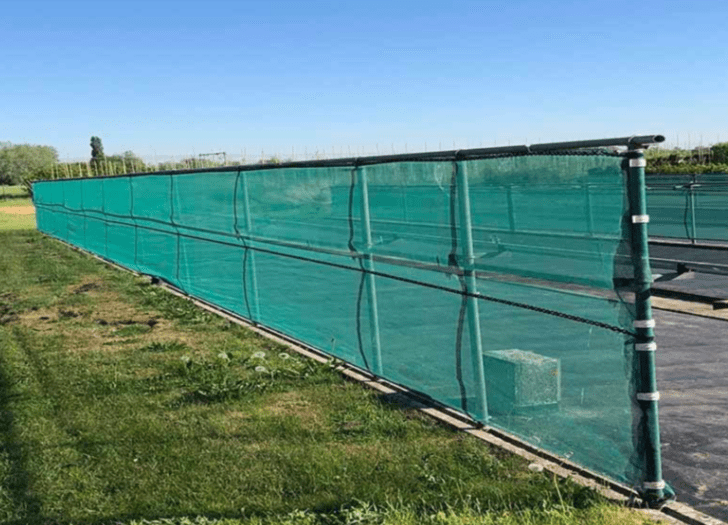
During the winter months, it’s important to take proactive measures to protect pecan trees from potential threats. One of the key methods for protecting pecan trees is installing windbreaks or barriers. Strong winter winds can damage the branches and foliage of pecan trees, so having windbreaks in place can help shield the trees from these damaging winds. This can help prevent branch breakage and overall damage to the tree. By taking steps to protect pecan trees from wind damage, we can ensure their overall health and productivity in the coming growing season. It’s important to be mindful of potential threats and to take appropriate measures to safeguard the well-being of pecan trees during the winter months.
Pest Control: Monitoring and managing common winter pests.
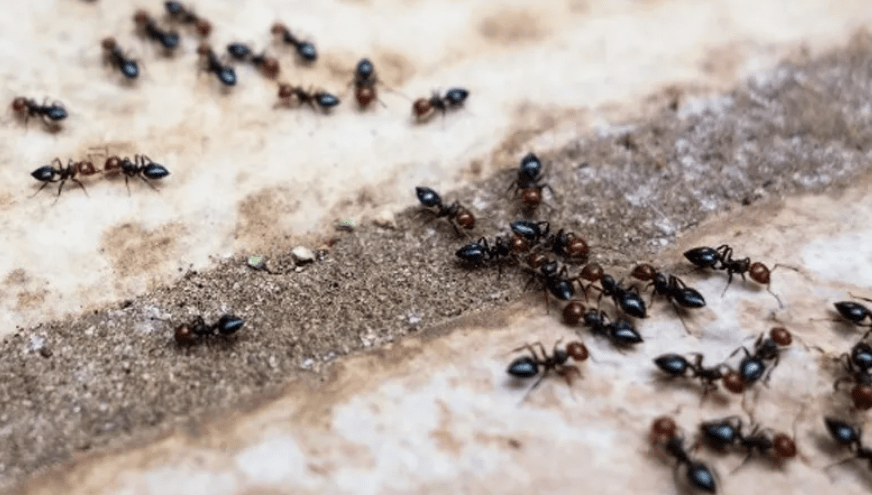
During the winter months, it’s important to take proactive measures to protect pecan trees from potential threats. One of the key methods for protecting pecan trees is installing windbreaks or barriers. Strong winter winds can damage the branches and foliage of pecan trees, so having windbreaks in place can help shield the trees from these damaging winds. This can help prevent branch breakage and overall damage to the tree. By taking steps to protect pecan trees from wind damage, we can ensure their overall health and productivity in the coming growing season. It’s important to be mindful of potential threats and to take appropriate measures to safeguard the well-being of pecan trees during the winter months.
Watering Pecan Trees in Winter
Adjusting watering schedules for winter months.
In order to protect pecan trees from potential threats during the winter months, it’s important to make sure they are well taken care of. One key method for protecting pecan trees is installing windbreaks or barriers to shield the trees from damaging winter winds. This can help prevent branch breakage and overall damage to the tree. Additionally, it’s important to adjust watering schedules for the winter months to ensure the trees are getting the right amount of water without over-saturating the soil. By being mindful of potential threats and taking proactive measures, we can safeguard the well-being of pecan trees and ensure their overall health and productivity in the coming growing season.
Importance of deep watering during dry winter periods.
During dry winter periods, it is important to prioritize deep watering for pecan trees. This can help prevent the soil from becoming too dry and causing stress to the trees. Deep watering allows the water to penetrate deep into the soil, promoting healthy root growth and ensuring that the trees have access to the water they need to thrive. Additionally, deep watering can help prevent branch breakage and overall damage to the tree during the winter months. By being mindful of the watering needs of pecan trees during dry winter periods, we can help protect their overall health and productivity in the coming growing season.
Signs of overwatering and underwatering.
Pecan trees require proper watering to thrive, and it’s important to be mindful of the signs of overwatering and underwatering. Overwatering can lead to root rot, wilting, and yellowing leaves, while underwatering can result in drooping leaves, slow growth, and wilting. It’s important to monitor the soil moisture and adjust watering schedules accordingly to ensure the trees are receiving the right amount of water. By being aware of these signs and taking proactive measures, we can help maintain the health and vitality of pecan trees.
Monitoring Pecan Tree Health in Winter
Regular inspections for signs of stress or disease.
In order to maintain the health and vitality of pecan trees, it is important to conduct regular inspections for signs of stress or disease. This can help prevent the soil from becoming too dry and causing stress to the trees. Deep watering allows the water to penetrate deep into the soil, promoting healthy root growth and ensuring that the trees have access to the water they need to thrive. Additionally, deep watering can help prevent branch breakage and overall damage to the tree during the winter months. By being mindful of the watering needs of pecan trees during dry winter periods, we can help protect their overall health and productivity in the coming growing season.
It is also important to be mindful of the signs of overwatering and underwatering. Pecan trees require proper watering to thrive, and it’s important to be aware of the signs of overwatering and underwatering. Overwatering can lead to root rot, wilting, and yellowing leaves, while underwatering can result in drooping leaves, slow growth, and wilting. It’s important to monitor the soil moisture and adjust watering schedules accordingly to ensure the trees are receiving the right amount of water. By being aware of these signs and taking proactive measures, we can help maintain the health and vitality of pecan trees.
Overall, by conducting regular inspections, monitoring soil moisture, and being mindful of signs of stress or disease, we can ensure that pecan trees remain healthy and productive during the winter months.
Common winter diseases and how to manage them.
During the winter months, many common diseases can affect our health, so it’s important to be aware of how to manage them. One common winter disease is the flu, which can be managed by getting vaccinated, practicing good hygiene, and staying home when sick. Another common winter disease is the common cold, which can be managed by staying hydrated, getting plenty of rest, and using over-the-counter medications to alleviate symptoms. Additionally, managing stress and maintaining a healthy diet can help boost the immune system and prevent the onset of winter illnesses. It’s important to be proactive in managing these diseases by taking preventive measures and seeking medical attention if necessary. By staying informed and taking steps to protect our health, we can better manage common winter diseases and minimize their impact on our well-being.
Tools and techniques for effective monitoring.
To effectively monitor the health and vitality of pecan trees, there are several tools and techniques that can be used. One important tool is a soil moisture meter, which can help to ensure that the trees are receiving the proper amount of water. Regular soil testing can also provide valuable information about the nutrient levels in the soil, allowing for adjustments to be made as needed. Visual inspections of the trees for signs of stress, disease, or pest infestations are also important for effective monitoring. Additionally, using weather monitoring tools can help to track temperature, humidity, and rainfall, which can impact the health of the trees. By utilizing these tools and techniques, pecan tree growers can ensure that their trees remain healthy and productive.
Pruning and Shaping Pecan Trees in Winter
is an important part of maintaining the health and productivity of the trees. Winter is the ideal time to prune pecan trees because the trees are dormant, and it’s easier to see the structure of the tree without the leaves. Proper pruning helps to remove dead or diseased branches, improve air circulation, and shape the tree for better production. When pruning, it’s important to use sharp, clean tools to make clean cuts and minimize damage to the tree. It’s also important to remove any water sprouts or suckers that may be growing on the trunk or branches. Shaping the tree involves training the branches to grow in a balanced and open structure, which allows for better light penetration and nut production. By taking the time to prune and shape pecan trees in winter, growers can ensure the health and productivity of their trees for the upcoming growing season.
Enhancing Soil Health During Winter
is crucial for maintaining the health and productivity of pecan trees. One way to do this is by applying organic matter, such as compost or mulch, to the soil. This helps to improve soil structure, fertility, and water retention. Additionally, cover cropping during the winter months can help to reduce erosion, suppress weeds, and add nutrients to the soil. Another important practice is soil testing to determine nutrient levels and pH, and then making any necessary adjustments to ensure optimal growing conditions for the trees. It’s also important to avoid soil compaction by minimizing foot and vehicle traffic in the orchard during wet conditions. By utilizing these tools and techniques, pecan tree growers can ensure that their trees remain healthy and productive.
Preparing for Spring Growth
By taking the time to prune and shape pecan trees in winter, growers can ensure the health and productivity of their trees for the upcoming growing season. Enhancing soil health during winter is crucial for maintaining the health and productivity of pecan trees. One way to do this is by applying organic matter, such as compost or mulch, to the soil. This helps to improve soil structure, fertility, and water retention. Additionally, cover cropping during the winter months can help to reduce erosion, suppress weeds, and add nutrients to the soil. Another important practice is soil testing to determine nutrient levels and pH, and then making any necessary adjustments to ensure optimal growing conditions for the trees. It’s also important to avoid soil compaction by minimizing foot and vehicle traffic in the orchard during wet conditions. By utilizing these tools and techniques, pecan tree growers can ensure that their trees remain healthy and productive.
In conclusion, caring for your pecan tree in the winter is crucial for a healthy harvest. Pruning, protecting from cold weather, and providing proper nutrients are essential steps to ensure the tree’s health and productivity. By following these tips, you can set your pecan tree up for success and enjoy a bountiful harvest in the coming months.
Frequently asked questions And Answer
Yes, winter is a great time to prune your pecan tree. Pruning helps to improve air circulation and sunlight exposure, which can lead to a healthier tree and a better harvest.
Pecan trees still need water in the winter, especially if there is a lack of rainfall. Water your tree deeply once every 2-3 weeks, making sure the soil is moist but not waterlogged.
It’s best to fertilize your pecan tree in late winter or early spring before new growth begins. Use a balanced fertilizer specifically formulated for pecan trees.
If you live in an area with harsh winter weather, consider wrapping the trunk of your pecan tree with tree wrap to protect it from frost and cold temperatures. Mulch around the base of the tree can also help insulate the roots.
Pecans typically mature and are ready for harvest in the fall, but some may still be on the tree in winter. If you haven’t already, you can harvest any remaining pecans in winter before they spoil or are eaten by wildlife.
Inspect your pecan tree regularly for signs of pests or diseases, and treat as necessary. Removing fallen leaves and debris from around the tree can also help prevent pests and diseases from overwintering.
If you have issues with wildlife eating your pecans, consider installing barriers or using repellents to protect your harvest. You can also harvest any remaining pecans before wildlife gets to them.
It’s best to avoid pruning your pecan tree in snowy or icy conditions, as it can be dangerous and cause damage to the tree. Wait for safer weather conditions to prune.

